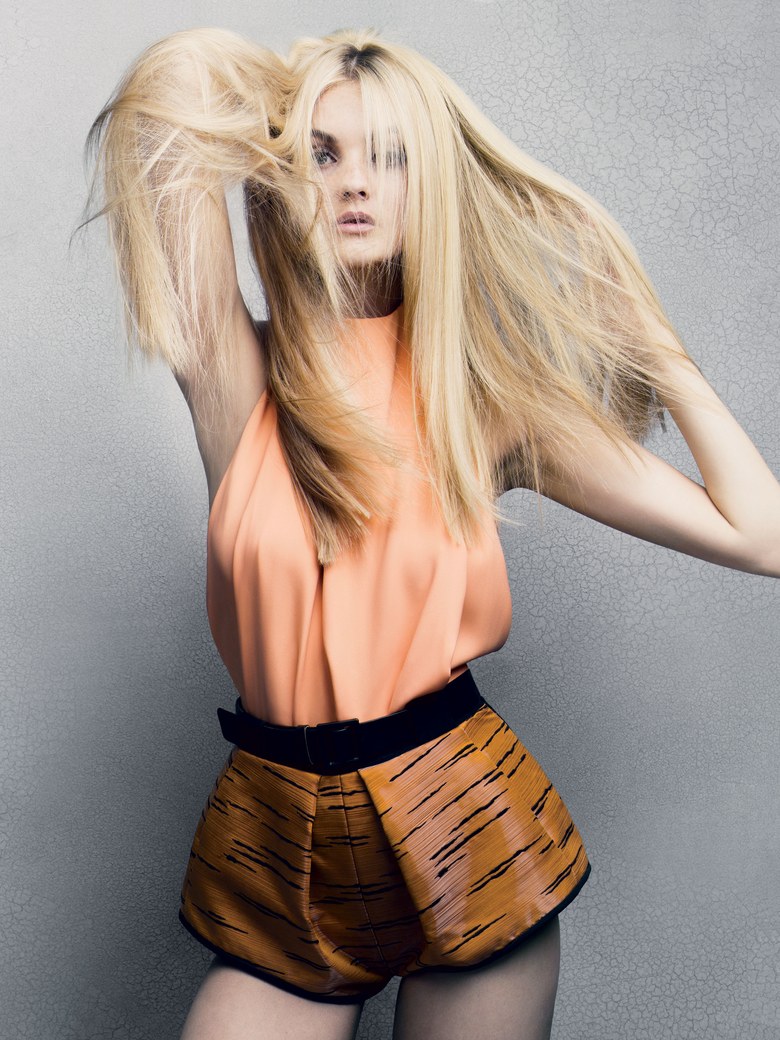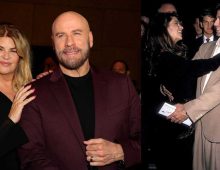In the beauty industry, hair thinning is referred to as “miniaturization,” the slow but steady process of shrinking hair follicles that produce weaker strands no longer able to reach their maximum growth potential. It’s a condition that more than one-third of females are expected to experience by the time they exit their 30s—whether they know it or not. “A lot of women see these short, thin hairs at their temples and think it is breakage or just the way their hair is—but for many, this could be a sign of hair miniaturization,” says Lars Skjoth, founder and lead scientist behind Harklinikken, the Danish-born clinic that’s gained a cult following among European royalty and Hollywood elites for its customized hair-restoration treatments. “[It’s a sign] the hair that replaces the previous one is not as thick, and is actual thinning.”
Once a category (and conversation) dominated by male statistics, the American Hair Loss Association reports that nearly 40 percent of the country’s hair-loss sufferers are in fact women. Triggers, unsurprisingly, include (but are not limited to) everything from hormone shifts, often following pregnancy, to stress and emotional trauma, illness, overuse of hot tools or chemical treatments, and, of course, age. “As we age, most hair is reduced either in the form of balding, receding, or thinning,” says dermatologist Dr. Dendy Engelman, who increasingly sees afflicted female clients at her Manhattan-based practice. “Genetics, as well as life changes, contribute to the [overall] interference of hair growth.” And unfortunately, like most other health-related issues, the longer one waits to address the problem, the harder it is to treat.
However, thanks to a wave of new supplements, in-office treatments, and at-home solutions (like a light-up, energy-emitting head crown), the ability to tackle rising concerns over the threat of long-term loss is finally in sight. Here are five ways to achieve a thicker, healthier head of hair.
Incorporate Supplements Into Your Diet
With awareness for internal wellness on the rise, the battle for many can potentially start—and end—with nutrition. “Supplements can be enormously helpful, as they strengthen the hair from the inside out,” says Dr. Francesca Fusco, of Manhattan’s Wexler Dermatology, who recommends Nutrafol’s innovative cocktail of botanicals and antioxidants, like ashwagandha and turmeric, that support the immune system, reduce stress, and balance the body as a whole. In order to address nutrient deficiencies, she notes that grabbing a hair, skin, and nails vitamin like Vital Proteins’s new Beauty Boost capsules will do more for the cause than old-school biotin pills. Engelman touts the protein peptides found in Reserveage’s Keratin Powder. “By nourishing the body with keratin, which is a building block of healthy hair, strands grow thick and strong throughout the growth cycle,” she says. And with chicly wrapped options on the rise like Ouai’s Thin pack, which harnesses amino acids to promote healthy keratin production, this daily dose is as portable as a pack of gum.
Exfoliate Your Scalp
Exfoliating the scalp helps slough off more than dead skin cells and product debris—it’s now believed that it may also remove excess DHT (a hormone that induces hair loss) while simultaneously promoting the growth of new follicles. Biologique Recherche’s cult classic Lotion P50 is ahead of the curve, already adapting a blend of alpha and beta hydroxy acids into hair care. Their new Lotion P50 Capillaire purifying hair and scalp treatment, now performed at Paul Labrecque Salon and Spa in Manhattan, incorporates a circulation-boosting massage, too. Physical exfoliants like walnut shell powder in IGK’s new Low Key Cleansing Walnut Scalp Scrub and sea salt in Christophe Robin’s Cleansing Purifying Scrub can fight inflammation-inducing buildup while increasing healthy blood flow when used sparingly in the shower. Fusco’s tried-and-true DIY method? Simply mix a bit of raw sugar into your shampoo and rub gently onto the scalp with the balls of fingers for an easy, natural (and pantry-friendly) crown polish.
Consider Laser Therapy
“Energy-based devices are in the forefront of hair-loss treatments,” says New York City dermatologist Dr. Neil Sadick, who counts low-level laser therapy (LLLT) and fractional lasers as the best in-office strategies. “Energy from the lasers is absorbed by the cells of the hair follicles, stimulating their metabolism and protein synthesis,” he explains. Proven effective in clinical studies, the end result could include increased hair growth as well as the reversal of hair thinning. Even better, now there are noninvasive photo-therapies that can either be administered by a doctor via Omnilux treatments during an appointment—or applied solo whilst binge-watching Netflix. Thanks to at-home tools like NutraStim’s Laser Hair Comb and HairMax’s glowing headband that looks like a futuristic tiara, to be worn for 20-minute spurts a couple of times a week, women can spare themselves multiple and inconvenient trips to the derm.
Go the Natural Route
It’s no surprise that day-to-day products applied directly to the scalp are as important as a carefully curated skin-care regimen. Similarly, Sadick advises that focusing on “clean” recipes free of fragrances and harmful toxins, parabens, and sulfates can be vital. “These [toxic] ingredients irritate and inflame the scalp, deplete beneficial nutrients, and ultimately sabotage the natural hair cycle,” he says. Harklinikken’s signature Hair Extract relies on a natural plant- and milk-based formula that’s customized to each client’s scalp and hair health. “Nothing is premade,” Skjoth says of each of his extract’s proprietary three-step fermentation process. After a consultation online or at a brick-and-mortar location, like their newly opened clinic at Manhattan’s Core Club, the team first confirms whether or not a person is an ideal candidate for their product (they do not work with patients suffering from certain forms of alopecia caused by scarring or autoimmune conditions). If accepted, the ritual of application becomes paramount. Massaged daily onto clean, dry hair, the results are then carefully documented with micro photographs of the scalp that quantify the exact number of new strands per square inch every month or so. For those who want to go the natural route without the commitment to checking in, Oille’s new Hemp + Sea Kelp Organic Hair Serum and Fig + Yarrow’s Hair + Scalp Tonic nourish follicles with organic oils like rosemary, which recent studies have found to be as effective at stimulating hair growth as the active chemical ingredient in Rogaine, minoxidil.
Understand the Filler Effect
Platelet-rich plasma, also known as PRP, has gained popularity in the beauty world for its rejuvenating benefits when reintroduced into skin routines (like the Kardashian-approved “vampire” facials). Formerly used for cell growth after an injury, PRP as a hair treatment requires a patient to draw blood so the processing of the enriched cells can later be injected back into the scalp. “PRP can stimulate the growth of follicles, thus reversing the hair miniaturization seen in male and female hair loss,” says Sadick of its growth factors and bioactive ingredients. Engelman, after pioneering the use of Botox injections for excessive scalp sweating, saw a surprising benefit in the patients she treated. “Preliminary studies for Botox in the scalp are showing that 50 percent of patients are growing new hair,” she says, before emphasizing that until studies are published, these results are early rumblings of what may lie around the corner.












